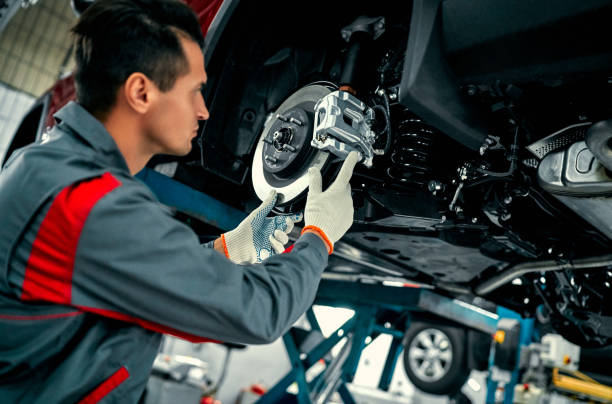Brake maintenance is a critical aspect of vehicle ownership that directly impacts road safety. The ability to stop effectively can mean the difference between a safe journey and a potentially catastrophic accident. As drivers, we often take our vehicle’s braking system for granted, assuming it will function flawlessly. However, ensuring the proper upkeep of your brakes is essential to guarantee a safe driving experience. In this article, we will explore the ABCs of brake maintenance to help you understand the importance of regular inspections and upkeep.
A – Awareness of Brake Health:
The first step in ensuring safety on the road is being aware of your vehicle’s brake health. Understanding the warning signs of potential brake issues can prevent problems before they escalate. Squealing or grinding noises when applying the brakes, a spongy or soft brake pedal, vibrating steering wheel, or an illuminated brake warning light are all red flags that your brakes require attention. Never ignore these signs, as they may indicate worn-out brake pads, damaged rotors, or other critical issues that demand immediate action.
B – Brake Inspection and Maintenance Schedule:
Regular brake inspections are crucial for optimal performance and safety. It is recommended to follow your vehicle manufacturer’s guidelines regarding maintenance schedules. Typically, brake inspections should be conducted every 12,000 to 15,000 miles, but this can vary depending on driving habits and road conditions. A professional mechanic should inspect the brake system thoroughly, checking brake pad thickness, rotor condition, brake fluid level, and overall brake system health.
C – Changing Brake Pads and Rotors:
Brake pads and rotors are vital components of the braking system that undergo significant wear during regular use. The brake pads are designed to create friction against the rotors, which slows down and stops the vehicle. Over time, brake pads wear out and become less effective, potentially leading to brake failure. It is essential to replace brake pads before they become too thin, as this can damage the rotors, resulting in more costly repairs.
D – Don’t Neglect Brake Fluid:
Brake fluid plays a crucial role in transmitting the force applied to the brake pedal to the braking components. It also acts as a lubricant, preventing corrosion within the brake system. Over time, brake fluid can absorb moisture, leading to reduced braking performance and potential damage to critical brake components. Regularly check the brake fluid level and have it flushed and replaced according to the manufacturer’s recommended interval.
E – Environment and Driving Habits:
Your driving habits and the environment in which you drive can significantly impact brake wear. Aggressive driving, such as hard braking and rapid acceleration, can wear down brake pads and rotors faster. Try to anticipate stops and apply gradual braking to extend the life of your brakes. Additionally, driving in areas with hilly terrain, stop-and-go traffic, or harsh weather conditions may increase wear on the braking system. Stay vigilant and adapt your driving style accordingly.
F – Familiarize Yourself with the Braking System:
While it’s crucial to have a professional mechanic handle complex brake repairs, it’s also helpful to familiarize yourself with the basics of the braking system. Understanding how the brake pedal, brake pads, calipers, and rotors work together can empower you to identify potential issues early on and communicate effectively with your mechanic when needed.
In conclusion, brake maintenance is a fundamental aspect of responsible vehicle ownership. By staying aware of your vehicle’s brake health, adhering to regular inspection and maintenance schedules, and adopting safe driving habits, you can ensure your brakes are in top-notch condition, maximizing road safety for yourself and others. Remember that the ABCs of brake maintenance – Awareness, Brake Inspection, Changing Brake Pads and Rotors, Don’t Neglect Brake Fluid, Environment and Driving Habits, and Familiarization with the Braking System – will keep you one step ahead in ensuring safety on the road.
